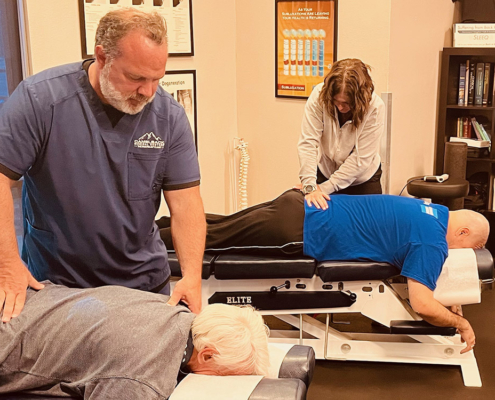The Ultimate Guide to Managing and Preventing Shoulder Pain

Shoulder pain can be a real nuisance, affecting your daily activities and quality of life. Whether you're dealing with occasional discomfort or chronic pain, it's essential to know how to manage and prevent shoulder pain effectively. This guide will provide you with valuable information and practical tips to keep your shoulders healthy and pain-free. If you are looking for a chiropractor in Naperville, you may visit Camelback Medical Centers.
Understanding Shoulder Pain
Causes of Shoulder Pain
- Rotator cuff injuries
- Shoulder impingement
- Frozen shoulder
- Arthritis
- Bursitis
- Tendonitis
Symptoms of Shoulder Pain
- Dull ache or sharp pain in the shoulder
- Stiffness or reduced range of motion
- Pain that worsens with movement or at night
- Weakness in the shoulder
- Popping or clicking sensations
Managing Shoulder Pain
Rest and Modify Activities
Resting the shoulder and avoiding activities that worsen the pain is crucial for recovery.
Ice and Heat Therapy
Applying ice packs to reduce inflammation and heat packs to relax muscles can help alleviate shoulder pain.
Physical Therapy
Working with a physical therapist to strengthen the shoulder muscles and improve flexibility can aid in pain management.
Medications
Over-the-counter pain relievers and anti-inflammatory medications can help reduce shoulder pain and swelling.
Injections
Corticosteroid injections may be recommended for severe shoulder pain to provide temporary relief.
Preventing Shoulder Pain
Proper Posture
Maintaining good posture can help prevent strain on the shoulders and reduce the risk of developing pain.
Regular Exercise
Engaging in regular shoulder-strengthening exercises can help build muscle strength and support the shoulder joints.
Warm-Up and Cool Down
Always warm up before exercising and cool down afterward to prevent muscle injuries and shoulder pain.
Ergonomic Workstation
Setting up an ergonomic workstation with proper chair height and desk alignment can prevent shoulder pain from prolonged sitting.
Lift and Carry Properly
When lifting or carrying heavy objects, use your legs instead of your back and shoulders to prevent strain and injury.
When to Seek Medical Help
If your shoulder pain persists despite home remedies and rest, it's important to seek medical attention. Additionally, if you experience any of the following symptoms, consult a healthcare professional immediately:
- Severe pain and swelling
- Inability to move the shoulder
- Numbness or tingling in the arm
- Pain after a traumatic injury
- Fever or unexplained weight loss
Conclusion
Shoulder pain can significantly impact your daily life, but with the right management techniques and preventive measures, you can keep your shoulders healthy and pain-free. By understanding the causes and symptoms of shoulder pain, implementing appropriate treatments, and taking proactive steps to prevent future issues, you can alleviate discomfort and improve your overall shoulder health. Remember to listen to your body, seek professional help when needed, and prioritize self-care to ensure optimal shoulder function and well-being.
